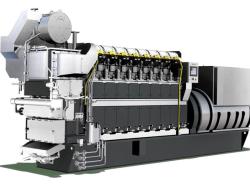
OR WAIT null SECS
© 2024 MJH Life Sciences™ and Turbomachinery Magazine. All rights reserved.
Containment seals, contacting and non-contacting
Seal design with one flexible element, seal ring and mating ring mounted in the containment seal chamber makes containment seal. It follows that containment seals are a particular design of tandem seal where the outboard seal is designed to operate on vapours, buffer gas or steam but not usually liquid. The function of the seal enables normal operational leakage from the inboard seal to be directed and collected in an appropriate manner and also to temporally prevent or reduce process fluid leakage in the event of a primary seal failure until a safe shutdown can be conducted. The intent to run in what can be classified as a ‘dry’ environment dictates that the seal face technology differs to that of conventional wet seals where liquids are used to lubricate and cool the seal faces.
This article contains excerpts from the paper, “A fresh look at containment seals and equipment” by Christopher John Carmody and Richard J Smith of AESSeal at the 2018 Asia & Turbomachinery Symposium.
In containment seals the face technology and materials combine to allow the seal to operate dry where there are two different seal designs namely contacting and noncontacting variants, each with their own merits and limitations which are discussed below. Irrespective of the seal face design the functionality of both seals is identical, namely that they should operate in what could be loosely termed as a back-up mode during normal operation (or stand-by) and then limit process fluid leakage for a period of time in the event of a primary seal failure. To a certain extent the majority of the other attributes associated with containment seals are a function of the various piping plan options plus the properties of the process fluid itself.
A further difference between conventional arrangement 2 wet buffer seals and containment seals is that the containment faces are separated from the (leakage) vent and drain with a (restriction) bush type device. This allows buffer gas to be introduced directly over the containment seal face (at a slightly higher pressure than the containment seal cavity) before passing underneath the bush where it then combines with the primary seal leakage before exiting the containment seal chamber via either the vent or drain connection. This means that the leakage is kept away from the containment seal faces and is directed out of the seal gland to the collection system.
Given also that the buffer gas is usually inert nitrogen it means that the process leakage emissions from the primary seal are virtually eliminated because they are guided to the collection system by the buffer gas and because the containment sealing interface is fed by inert buffer gas.
Contacting containment seals
Dry contacting containment seal designs utilise geometries and materials that allow continuous contact of the secondary (containment) mechanical seal faces in a gas environment. Such seals were designed and developed to operate in gaseous environments and the expectation is that there is only usually a limited amount of fluid within the seal interface film. The lack of fluid at the sealing interface is compensated for by using specially formulated grades of carbon with high graphite content.
Noncontacting containment seals
These tend to have periodic features (commonly referred to as grooves) on one seal face that produces localised high pressures under the influence of motion such that lift forces are produced that separates the faces such that the fluid (gas) film both lubricates and supports the sealing load making it fully noncontacting during motion (see figure 6). This eliminates contact friction and heat generation allowing noncontacting containment seals to withstand much higher pressure and higher speeds than contacting seal designs.



